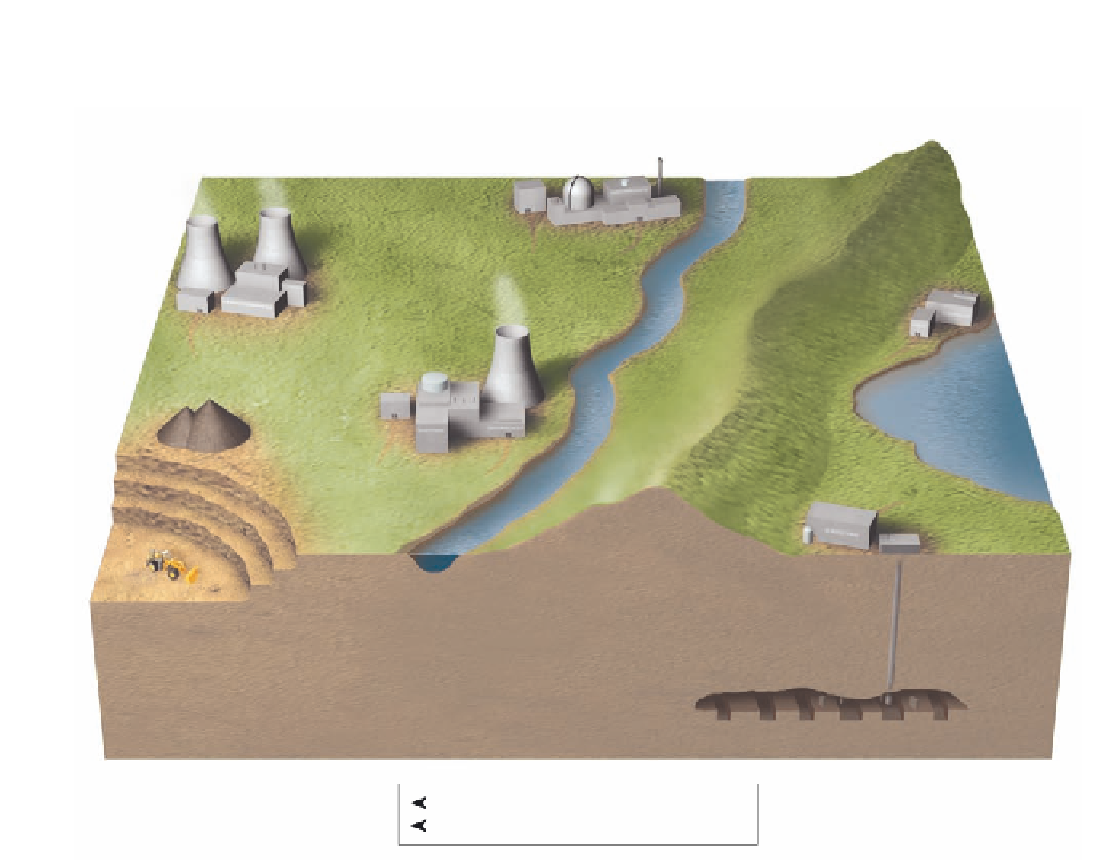Environmental Engineering Reference
In-Depth Information
Decommissioning
of reactor
Fuel assemblies
Reactor
Enrichment of UF
6
Fuel fabrication
(conversion of enriched
UF
6
to UO
2
and fabrication
of fuel assemblies)
Temporary storage
of spent fuel assemblies
underwater or in dry casks
Uranium-235 as UF
6
Plutonium-239 as PuO
2
Conversion of
U
3
O
8
to UF
6
Spent fuel
reprocessing
Low-level radiation
with long half-life
Geologic disposal
of moderate-
and high-level
radioactive wastes
Open fuel cycle today
Prospective “closed” end fuel cycle
Figure 13-18
Science:
the nuclear fuel cycle.
at the Chernobyl nuclear plant in Ukraine (see Case
Study, below)
Another problem is investor concerns about the
economic feasibility of nuclear power, taking into ac-
count the entire nuclear fuel cycle. At Three Mile Is-
land, investors lost more than $1 billion in one hour
from damaged equipment and repair, even though no
human lives were lost. Also, concern has been voiced
about the vulnerability of nuclear power plants to ter-
rorist attack after the destruction of New York's World
Trade Center buildings and Washington, D.C.'s Penta-
gon on September 11, 2001. Experts are especially con-
cerned about the vulnerability of poorly protected and
intensely radioactive spent fuel rods stored in water
pools or casks outside of reactor buildings.
Chernobyl
is known around the globe as the site of the
world's most serious nuclear power plant accident. On
April 26, 1986, a series of explosions in one of the reac-
tors in a nuclear power plant in Ukraine—then part of
the Soviet Union—blew the massive roof off a reactor
building and flung radioactive debris and dust high
into the atmosphere. A huge radioactive cloud spread
over much of Belarus, Russia, Ukraine, and other parts
of Europe and eventually encircled the planet.
Clouds of radioactive material escaped into the at-
mosphere for 10 days. The surrounding environment
and people were exposed to radiation levels 100 times
higher than those caused by the atomic bomb dropped
on Hiroshima, Japan, near the end of World War II.
According to various UN studies, the disaster,
which was caused by poor reactor design and human
error, had dire consequences. At least 31 people near
the accident site were killed directly. More than half a
million people were exposed to dangerous levels of ra-
dioactivity, which ultimately may cause 8,000-15,000
premature deaths.
Science Case Study: The Chernobyl Nuclear
Power Plant Accident
The world's worst nuclear power plant accident
occurred in 1986 in Ukraine.















